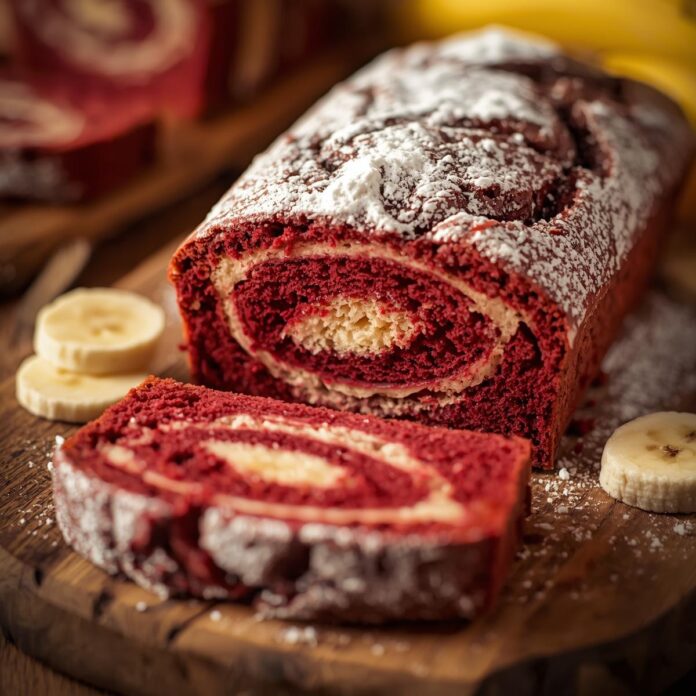Greek Yogurt Marinated Chicken Breasts represent a culinary technique that elevates a simple, lean protein into a tender, flavorful dish that is both versatile and nourishing. At first glance, chicken breasts may seem ordinary—mild in flavor, prone to dryness if mishandled, and often perceived as a bland staple. Yet, when approached with care, they become a canvas for layering flavors and textures, allowing the cook to transform a modest ingredient into a memorable centerpiece. The secret lies in the marinade, the choice of aromatics and spices, and the understanding of protein behavior during cooking.

Greek yogurt is the cornerstone of this recipe. Unlike cream-based or oil-heavy marinades, Greek yogurt provides both tang and structure. Its natural acidity gently breaks down the proteins in chicken, tenderizing the meat without turning it mushy. Simultaneously, the yogurt forms a protective coating that helps retain moisture during cooking. This dual role of yogurt—tenderizer and moisture retainer—is central to achieving a succulent final product. Understanding this function sets the stage for the detailed instructions to follow.
The addition of complementary ingredients—such as garlic, lemon juice, olive oil, fresh herbs, and carefully selected spices—enhances the natural flavor of the chicken while adding complexity. Garlic provides pungency and depth, lemon juice contributes brightness and acidity, and herbs like thyme, rosemary, or oregano introduce aromatic layers that are both fragrant and flavorful. Spices, whether smoked paprika, cumin, or black pepper, give the dish dimension, ensuring that every bite engages the senses. This interplay of ingredients is foundational to the success of Greek Yogurt Marinated Chicken Breasts.
Marination is not merely about coating the meat; it is a chemical and culinary process. The interaction between yogurt, acid, and salt initiates a transformation in the chicken, subtly altering texture and preparing it to absorb flavor more effectively. Timing is critical—too short, and the flavors remain superficial; too long, and the protein can become overly soft. Understanding the science of marination allows cooks to adjust timing based on chicken thickness, freshness, and personal taste preferences.
The cooking method itself—whether grilling, pan-searing, or oven-roasting—interacts with the marinade to produce distinct results. Grilling imparts a smoky, caramelized exterior; pan-searing develops a golden crust while maintaining interior juiciness; oven-roasting offers even cooking and allows the marinade to gently flavor the chicken without excessive direct heat. Choosing a cooking method depends on available equipment, desired texture, and flavor preferences, but the principles of moisture retention and even cooking remain constant.
Greek Yogurt Marinated Chicken Breasts are also versatile in presentation and serving. They can be enjoyed as a standalone protein, paired with vegetables, grains, or salads, or incorporated into sandwiches, wraps, or grain bowls. They are suitable for weeknight dinners, meal prep, or more formal gatherings, making them a reliable option in diverse culinary contexts. The ability to adapt this recipe to a variety of meals while maintaining consistent flavor and texture is one of its defining characteristics.
Beyond taste and texture, this dish embodies a philosophy of balanced cooking. It emphasizes fresh, high-quality ingredients, careful preparation, and mindfulness of how flavors and textures interact. The recipe encourages home cooks to pay attention to detail—how herbs are chopped, how chicken is patted dry, how marinade is applied—because each step contributes to the final outcome. In this sense, Greek Yogurt Marinated Chicken Breasts serve as both a practical dish and a lesson in thoughtful, intentional cooking.
This introduction also sets the stage for understanding potential variations. Greek yogurt provides a neutral yet tangy base that pairs well with Mediterranean, Middle Eastern, or even South Asian flavor profiles. By adjusting herbs, spices, or additional flavorings, the cook can create diverse interpretations while relying on the same fundamental technique. This versatility highlights why Greek Yogurt Marinated Chicken Breasts are both timeless and adaptable.
Finally, the sensory experience of this dish is important to consider. The aroma of garlic and herbs mingling with yogurt during cooking, the sight of a golden-brown crust contrasted with tender, creamy interior, and the layered flavors achieved with proper seasoning all contribute to a satisfying eating experience. Greek Yogurt Marinated Chicken Breasts are not just about nourishment—they are about enjoyment, balance, and the satisfaction of well-executed home cooking.
Greek Yogurt Marinated Chicken Breasts – Detailed Instructions
1. Ingredient Preparation
Before starting the marination or cooking process, it’s essential to prepare all ingredients carefully. Preparation ensures uniformity, flavor integration, and proper cooking.
-
Chicken Breasts
-
Choose boneless, skinless chicken breasts of roughly uniform size. Uniformity ensures even cooking.
-
Pat each breast dry with paper towels. Removing excess moisture helps the marinade adhere better and ensures proper browning during cooking.
-
-
Greek Yogurt
-
Use full-fat or 2% Greek yogurt for richness. Fat contributes to tenderness and flavor absorption.
-
Stir the yogurt gently to achieve a smooth consistency; avoid overmixing to prevent air pockets that could dilute flavor concentration.
-
-
Acidic Components
-
Lemon juice or vinegar enhances tenderness by breaking down proteins.
-
Measure precisely; too much acid can “cook” the chicken prematurely or make it mushy if left too long in the marinade.
-
-
Aromatics and Seasonings
-
Garlic, onion, herbs, and spices should be finely minced or grated to maximize surface contact.
-
Fresh herbs like thyme, rosemary, or parsley should be washed, dried, and chopped finely. Excess water can dilute the marinade.
-
Spices (paprika, cumin, chili powder, black pepper) should be measured accurately for consistent flavor balance.
-
2. Preparing the Marinade
-
Combine Yogurt and Acids
-
In a medium mixing bowl, whisk Greek yogurt with lemon juice or vinegar until smooth.
-
This combination ensures a uniform acidic environment that will tenderize the chicken and carry flavors evenly.
-
-
Incorporate Aromatics and Herbs
-
Add minced garlic, grated onion, and chopped herbs to the yogurt mixture.
-
Stir gently to integrate; over-stirring can incorporate unnecessary air and change the texture.
-
-
Season with Salt and Spices
-
Salt is critical for flavor penetration; add it early in the marinade.
-
Include ground spices gradually, tasting a small portion of yogurt (without chicken) if needed to adjust intensity.
-
3. Marinating the Chicken
-
Coating the Chicken
-
Place chicken breasts in a shallow dish or resealable plastic bag.
-
Pour the yogurt marinade over the chicken.
-
Using clean hands or a silicone spatula, ensure every surface is evenly coated. Uneven coating can result in dry spots or inconsistent flavor.
-
-
Marination Time
-
Cover the dish and refrigerate. Recommended times:
-
Minimum: 30 minutes for light flavor infusion
-
Optimal: 4–6 hours for deep flavor and tenderness
-
Maximum: 24 hours; longer may break down proteins excessively, creating a mushy texture
-
-
Avoid leaving the chicken at room temperature during marination to prevent bacterial growth.
-
4. Preparing to Cook
-
Bring Chicken to Room Temperature
-
Remove chicken from the refrigerator about 20–30 minutes before cooking.
-
This ensures even cooking and prevents the exterior from overcooking while the interior warms.
-
-
Preheat Cooking Surface
-
For pan-searing: heat a skillet over medium-high heat. Add 1–2 teaspoons of neutral oil with a high smoke point.
-
For oven baking: preheat the oven to 400°F (204°C). Use a lightly greased or parchment-lined baking tray.
-
For grilling: preheat the grill to medium-high, clean grates, and lightly oil to prevent sticking.
-
5. Cooking the Chicken Breasts
Pan-Searing Method
-
Place the marinated chicken breasts in the hot skillet.
-
Sear without moving for 4–5 minutes per side, until a golden-brown crust forms.
-
Avoid overcrowding the pan; this causes steaming instead of searing.
-
-
Reduce heat slightly if the exterior browns too quickly while the interior is still raw.
-
Use a meat thermometer to check doneness: internal temperature should reach 165°F (74°C).
Oven-Baking Method
-
Arrange marinated chicken breasts on the prepared baking tray.
-
Bake uncovered for 20–25 minutes, depending on thickness.
-
Optionally, broil for 1–2 minutes at the end to create a lightly browned top.
-
Confirm doneness with a meat thermometer.
Grilling Method
-
Place chicken breasts on the preheated grill.
-
Cook for 6–7 minutes per side, depending on thickness, maintaining medium-high heat.
-
Avoid excessive flipping; one turn per side ensures a good sear and prevents sticking.
-
Check with a meat thermometer for 165°F (74°C) internal temperature.
6. Resting the Chicken
-
Remove cooked chicken from heat and transfer to a clean plate.
-
Tent loosely with aluminum foil and allow to rest for 5–10 minutes.
-
Resting allows juices to redistribute, preventing dry, tough bites.
-
Cutting immediately causes moisture loss, diminishing tenderness.
-
7. Serving Suggestions
-
Slice the chicken breasts against the grain to maximize tenderness.
-
Serve with complementary sides:
-
Steamed vegetables or roasted potatoes
-
Rice pilaf or couscous
-
Fresh salad with a light vinaigrette
-
-
Optionally, drizzle extra marinade or a yogurt-based sauce over the chicken for enhanced flavor.
Greek Yogurt Marinated Chicken Breasts
Greek Yogurt Marinated Chicken Breasts represent a culinary technique that elevates a simple, lean protein into a tender, flavorful dish that is both versatile and nourishing. At first glance, chicken breasts may seem ordinary—mild in flavor, prone to dryness if mishandled, and often perceived as a bland staple. Yet, when approached with care, they become a canvas for layering flavors and textures, allowing the cook to transform a modest ingredient into a memorable centerpiece. The secret lies in the marinade, the choice of aromatics and spices, and the understanding of protein behavior during cooking.
Ingredients
- For the Marinade:
- 1 cup plain Greek yogurt
- 3 tablespoons olive oil
- 3 cloves garlic, minced
- Juice of 1 lemon (about 3 tablespoons)
- 1 teaspoon lemon zest
- 1 teaspoon dried oregano
- ½ teaspoon dried thyme (optional)
- ½ teaspoon smoked paprika
- ½ teaspoon salt
- ¼ teaspoon black pepper
- Optional: ¼ teaspoon crushed red pepper flakes for mild heat
- For the Chicken:
- 4 boneless, skinless chicken breasts (6–8 oz each)
- Optional garnish: fresh parsley or dill, lemon wedges
Instructions
1. Make the Marinade
- In a bowl, whisk together Greek yogurt, olive oil, garlic, lemon juice, lemon zest, oregano, thyme, paprika, salt, pepper, and optional red pepper flakes.
2. Marinate the Chicken
- Pat the chicken dry.
- Coat each breast thoroughly in the yogurt marinade.
- Place in a sealed container or zip-top bag.
- Refrigerate for at least 30 minutes, ideally 2–8 hours. Overnight gives maximum tenderness and flavor.
3. Preheat the Oven or Grill
- Oven: Preheat to 400°F (200°C)
- Grill: Preheat to medium-high heat
4. Cook the Chicken
Oven method:
- Place marinated chicken on a baking sheet lined with parchment paper or a lightly greased pan.
- Bake 20–25 minutes, or until internal temperature reaches 165°F (74°C).
- Optional: broil for 1–2 minutes at the end for a golden top.
Grill method:
- Grill chicken 6–7 minutes per side, depending on thickness, until fully cooked.
- Avoid flipping too often to keep grill marks and char flavor.
5. Rest and Serve
- Let chicken rest 5 minutes before slicing.
- Garnish with fresh parsley or dill and a squeeze of lemon.
- Serve with rice, roasted vegetables, Greek salad, or pita bread.
Notes
- Tenderizing: Greek yogurt’s acidity and enzymes help tenderize the chicken without making it mushy.
- Flavor variations: Add 1 teaspoon cumin or smoked paprika for a deeper, smoky flavor.
- Alternative cooking methods: Pan-sear over medium heat for 5–6 minutes per side, then finish in the oven if thicker breasts.
- Sauce idea: Use extra yogurt to make a quick sauce—mix with garlic, lemon juice, and chopped herbs.



